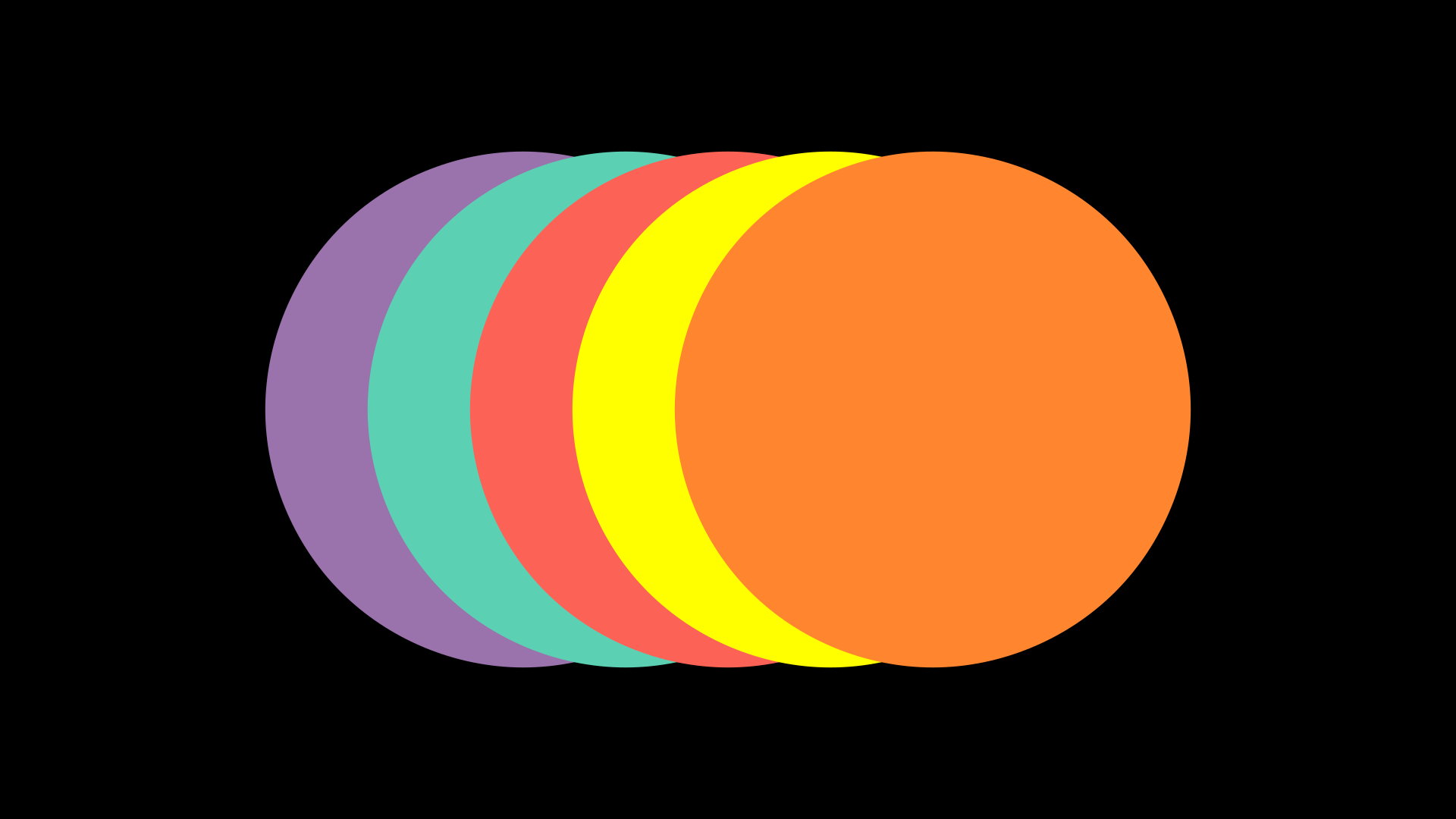Layers
There are two factors that Manim takes into account when superimposing one Mobject on top of another when rendering a scene:
The order in which the Mobjects are added to the scene using
Scene.addorScene.play.The
z_index.
Scene.mobjects
When you add a Mobject to the scene (either with Scene.add or Scene.play), Manim adds that Mobject to a list called Scene.mobjects in the order in which they are added in the code, and by default, to all Mobjects they are assigned a z_index = 0.
See this code:
def construct(self):
mob_kwargs = {"fill_opacity": 1}
c_red = Circle(color=RED,**mob_kwargs).shift(LEFT)
t_teal = Triangle(color=TEAL,**mob_kwargs)
s_purple = Square(color=PURPLE,**mob_kwargs).shift(RIGHT)
[mob.scale(2) for mob in [c_red, t_teal, s_purple]]
self.add(c_red,t_teal) # L1
self.add(s_purple) # L2
# Print list
print(self.mobjects)
OUT:
[Circle, Triangle, Square]

If you play with the commented lines with L1 and L2 changing the order of how you add the Mobjects you will see that the list and that the Mobjects in the camera change.
Specifically, the first is to be added to the bottom, the second overlaps the first, and the third overlaps the first two, and so on.
z_index

Sometimes it is difficult to control the order of the Mobjects in the Scene.mobjects list, so the z_index functionality was added.
By default, all Mobjects have z_index = 0, but you can change this using Mobject.set_z_index(INDEX).
Play with the following code:
def construct(self):
mob_kwargs = {"fill_opacity":1,"radius":2.5}
mob_teal = Circle(color=TEAL,**mob_kwargs)\
.shift(LEFT)
mob_purple = Circle(color=PURPLE,**mob_kwargs)\
.shift(LEFT*2)
mob_red = Circle(color=RED,**mob_kwargs)
mob_yellow = Circle(color=YELLOW,**mob_kwargs)\
.shift(RIGHT)
mob_orange = Circle(color=ORANGE,**mob_kwargs)\
.shift(RIGHT*2)
mob_purple.set_z_index(0)
mob_teal .set_z_index(1)
mob_red .set_z_index(2)
mob_yellow.set_z_index(3)
mob_orange.set_z_index(4)
self.add(mob_purple, mob_teal,mob_red,mob_yellow,mob_orange)

And the best thing is that these positions are fulfilled in the animations and in 3D scenes.
If two Mobjects have the same z_index then the Scene.mobjects list rule will apply.